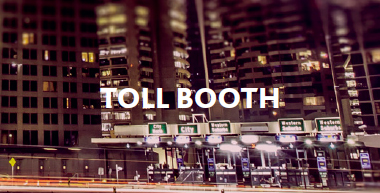More infrastructure projects (service concession arrangements) of public sector entities to be recognised on balance sheet
On 20 July 2017, the Australian Accounting Standards Board issued AASB 1059 Service Concession Arrangements: Grantors, which when effective, is likely to result in more infrastructure projects of public sector entities conducted via public-private partnerships (PPPs) being recognised on balance sheet. |
What is a PPP?
Governments typically enter into PPPs in order to deliver certain services to the public. Common examples of PPPs include the construction and management of infrastructure assets such as toll roads, bridges, airports and hospitals by private sector entities where control of the asset may be given back to the government after a specified period.
| ‘Some PPPs involve the government paying the private sector operator directly and some involve the operator being permitted to collect payment directly from the public, e.g. collecting road tolls. The new requirements mean assets will be recognised consistently, regardless of how they are financed. In addition, more disclosures will be made around the terms of PPP arrangements, giving taxpayers a greater understanding of the risks associated with such projects.’ Extract from AASB Media Release, 20 July 2017 |
What type of arrangements are covered by AASB 1059?
AASB 1059 provides guidance to public sector entities on how it should recognise assets and liabilities from PPPs where it is the grantor in a service concession arrangement.
However, public sector entities would only apply AASB 1059 to service concession arrangements structured where the operator:
- Provides a public service related to a service concession asset on behalf of a grantor, and
- Manages at least some of the services provided at its own discretion, rather than at the discretion of the grantor. However, the services provided need to be more than insignificant to the arrangement.
| Operator | Grantor | |||
| Operator constructs /upgrades asset (road) | ↘ | ↙ | Grantor grants use of service concession asset | |
|  | ← | Service concession asset | |
| ↓ | ||||
| Operator operates toll road on behalf of grantor | ||||
| ↓ | ||||
 | ||||
AASB 1059 does not govern the accounting by operators in a service concession arrangement. Instead, guidance for these is contained in Interpretation 12 Service Concession Arrangements.
What type of arrangements are outside the scope of AASB 1059?
The following types of arrangements are outside the scope of AASB 1059:
- No public service is delivered
- The operator manages the public services as agent for the grantor (rather than as principal), and
- The service and management components of the contract relate to assets not controlled by the grantor.
What is a ‘service concession asset’?
A ‘service concession asset’ is an asset other than goodwill, to which the operator has right of access to provide public services on behalf of the grantor in a service concession arrangement that:
- The operator constructs, develops, upgrades or replaces major components, or acquires from a third party or is an existing asset of the operator, or
- Is an existing asset of the grantor, including a previously unrecognised identifiable intangible asset and land under roads, or an upgrade to or replacement of a major component of an existing asset of the grantor.
When should the grantor recognise a service concession asset?
A grantor recognises a service concession asset, or an upgrade to a service concession asset, in its statement of financial position if it controls the asset.
‘….The grantor controlsthe asset if, and only if:
Extract AASB 1059, paragraph 5 |
Service concession arrangements have different terms and conditions around the length of time the service provider operates the asset. These can vary from the constructed asset being managed by the private operator for its entire useful life (whole-of-life asset), to the private operator managing the asset for part of its useful life, then returning the asset to government. A grantor still recognises a service concession asset in an arrangement where the operator manages the asset for its entire useful life, provided the grantor controls the asset in accordance with the requirements of AASB 1059, paragraph 5(a) described above.
Example 1
A government department enters into an arrangement with a private company to construct a toll road between an airport and a major city, and the private company is responsible for maintaining the road to a specified level, and collecting tolls for a period of 15 years after construction.
The government department is responsible for regulating the price of the tolls during the period of the arrangement, and the road must be transferred to the government department at the end of the arrangement.
In this case, the government department controls the asset because the agreement stipulates:
- The asset (road) that must be provided to the public
- The condition the road must be maintained to
- The price the toll operator can charge the public to access the road, and
- That the road will be transferred to the government department after 15 years, at the end of the arrangement.
How should the grantor measure the service concession asset?
The grantor initially recognises a service concession asset at ‘current replacement cost’, calculated in accordance with the ‘cost approach’ to fair value measurement in AASB 13 Fair Value Measurement.
This same principle applies to existing assets owned by the grantor and transferred to a service concession asset under a new service concession arrangement, and any difference between the fair value of the asset using current replacement cost and the carrying value of the asset is accounted for as if it were a revaluation (i.e. taken to the asset revaluation reserve). However, this initial revaluation does not mean that the grantor must adopt a revaluation model going forward.
Example 2
If a government entity reclassifies a hospital that it previously owned and operated as a service concession asset when it enters into an agreement to expand the hospital, and transfers the day-to-day operations of the hospital to the private operator, the existing hospital would be reclassified as a service concession asset and recognised at its current replacement cost.
How is the service concession asset subsequently measured?
After initial recognition, the grantor depreciates or amortises the service concession asset over its useful life using the principles in AASB 116 Property, Plant and Equipment or AASB 138 Intangible Assets.
If the asset is measured using the revaluation model, fair value is determined using ‘current replacement cost’. In a departure from the requirements of AASB 138, service concession assets classified as intangible assets can be measured using the revaluation model even if there is no active market.
What happens to the service concession asset when the agreement finishes?
If, at the end of the agreement, the asset is transferred to the public sector entity (i.e. the service provider did not operate the asset for its entire useful life) the grantor:
- Reclassifies the asset based on its nature or function, i.e. a PPE service concession asset would be classified as PPE and not as a service concession subset of PPE
- Applies any of the fair value measurement methods in AASB 13 to determine fair value (i.e. references to fair value are no longer read as meaning ‘current replacement cost’), and
- Only derecognises the asset when it loses control of the asset.
When should the grantor recognise a service concession liability?
The general requirement is that the grantor in a service concession arrangement should recognise a service concession liability whenever it meets the conditions to recognise a service concession asset.
An exception to this principle occurs when the grantor reclassifies an existing asset to a service concession asset.
Example 3
A government entity reclassifies a hospital that it previously owned and operated as a service concession asset when it enters into a new agreement to expand the hospital and transfers the day-to-day operations of the hospital to a private operator.
In this case, the government entity would not recognise a service concession liability for the original hospital asset transferred because it is merely reclassifying an asset as a service concession asset, and no additional consideration is received from the operator.
How should the grantor initially measure a service concession liability?
The grantor in a service concession arrangement should recognise a service concession liability at the same amount as the service concession asset.
| Service concession asset ($) | = | Service concession liability ($) |
|---|
However, when the grantor reclassifies an existing asset as a service concession asset, no liability is recognised unless additional consideration is provided by the operator.
Example 4
A government entity reclassifies a hospital that it previously owned and operated as a service concession asset when it enters into a new agreement to expand the hospital and transfers the day-to-day operations of the hospital to a private operator.
In Example 3 we observed that the government entity does not recognise a service concession liability for the original hospital asset transferred because it is merely reclassifying an asset as a service concession asset, and no additional consideration is received from the operator.
However, as the hospital is expanded and upgraded, the government entity would recognise a service concession asset and a corresponding liability for the amounts spent on upgrade/expansion work.
Subsequent recognition of the service concession liability
After initial recognition, the grantor needs to determine if the liability represents a:
- Financial liability owing to the operator, or
- Grant of a right to the operator to earn revenue from third party users of the service concession asset.
In some cases, there may need to be a split between both types of liabilities.
| Type of liability | Description | Subsequent measurement of liability |
| A financial liability to the operator | Where the grantor has a contractual obligation to pay cash or another financial asset to the operator. For example:
| After initial recognition, measure liability in accordance with AASB 9 Financial Instruments |
| A grant of a right to the operator to earn revenue from third party users of the service concession asset | Where the grantor grants the right to the operator to earn revenue from the public from use of the asset. For example, where the grantor gives the right to a toll road operator to collect tolls from the road it constructed over a 20 year period. | This liability relates to unearned revenue, and the grantor reduces this liability by recognising revenue according to the substance of the service concession arrangement. |
When does the standard first apply?
Public sector entities that are grantors in a service concession arrangement will be required to apply this standard to their financial reports for periods beginning on or after 1 January 2019. The entity has the option of early adopting this standard for periods before 1 January 2019.